 W
W99 Fables is a book of fables by American author William March. The collection was first written around 1938 but was never published as a whole. More than 40 had been published in journals and magazines such as Prairie Schooner, Kansas Magazine, Rocky Mountain Review, and New York Post. Not long before his death in 1954, March returned to the collection and edited it, leaving 99 fables in all. March's manuscripts of the fables were further edited in 1959 by William T. Going, and published in 1960 by the University of Alabama Press, with illustrations by Richard Brough. The cover won an award at the 1960 Southern Books Competition.
 W
WAesop's Fables, or the Aesopica, is a collection of fables credited to Aesop, a slave and storyteller believed to have lived in ancient Greece between 620 and 564 BCE. Of diverse origins, the stories associated with his name have descended to modern times through a number of sources and continue to be reinterpreted in different verbal registers and in popular as well as artistic media.
 W
WAnansi is an Akan folktale character. He often takes the shape of a spider and is sometimes considered to be a god of all knowledge of stories. Taking the role of trickster, he is also one of the most important characters of West African, African American and Caribbean folklore. Originating in West Africa, these spider tales were transmitted to the Caribbean by way of the transatlantic slave trade. Anansi is most well known for his ability to outsmart and triumph over more powerful opponents through his use of cunning, creativity and wit. Despite taking on the role of the trickster, Anansi's actions and parables often carry him as protagonist due to his ability to transform his apparent weaknesses into virtues. He is among several West African tricksters including Br'er Rabbit and Leuk Rabbit.
 W
W"The Blind Man and the Lame" is a fable that recounts how two individuals collaborate in an effort to overcome their respective disabilities. The theme is first attested in Greek about the first century BCE. Stories with this feature occur in Asia, Europe and North America.
 W
WThe parable of the blind men and an elephant originated in the ancient Indian subcontinent, from where it has been widely diffused. It is a story of a group of blind men who have never come across an elephant before and who learn and imagine what the elephant is like by touching it. Each blind man feels a different part of the elephant's body, but only one part, such as the side or the tusk. They then describe the elephant based on their limited experience and their descriptions of the elephant are different from each other. In some versions, they come to suspect that the other person is dishonest and they come to blows. The moral of the parable is that humans have a tendency to claim absolute truth based on their limited, subjective experience as they ignore other people's limited, subjective experiences which may be equally true.
 W
WThe Boy and the Filberts is a fable related to greed and appears as Aarne-Thompson type 68A. The story is credited to Aesop but there is no evidence to support this. It is not included in either the Perry Index or in Laura Gibbs' inclusive collection (2002).
 W
WThe Brahmin and the Mongoose is a folktale from India, and "one of the world's most travelled tales". It describes the rash killing of a loyal animal, and thus warns against hasty action. The story underlies certain legends in the West, such as that of Llywelyn and his dog Gelert in Wales, or that of Saint Guinefort in France. It is classified as Aarne-Thompson type 178A.
 W
WThe Buke of the Howlat, often referred to simply as The Howlat, is a humorous 15th century Scots poem by Richard Holland.
 W
WThe Crab and the Monkey, also known as Monkey-Crab Battle or The Quarrel of the Monkey and the Crab, is a Japanese folktale. In the story, a sly monkey kills a crab, and is later killed in revenge by the crab's offspring. Retributive justice is the main theme of the story.
 W
WDialogus creaturarum, is a collection of 122 Latin-language fables and, as the title implies, dialogues of creatures. It was the first book ever printed in Sweden (1483).
 W
WThe story of the drunken mouse and the cat who rescued him was a joke that appeared in several mediaeval collections of stories. It is numbered 615 in the Perry Index as among those that were only recorded in the Middle Ages.
 W
WThe Elm and the Vine were associated particularly by Latin authors. Because pruned elm trees acted as vine supports, this was taken as a symbol of marriage and imagery connected with their pairing also became common in Renaissance literature. Various fables were created out of their association in both Classical and later times. Although Aesop was not credited with these formerly, later fables hint at his authorship.
 W
WFable is a literary genre: a succinct fictional story, in prose or verse, that features animals, legendary creatures, plants, inanimate objects, or forces of nature that are anthropomorphized, and that illustrates or leads to a particular moral lesson, which may at the end be added explicitly as a concise maxim or saying.
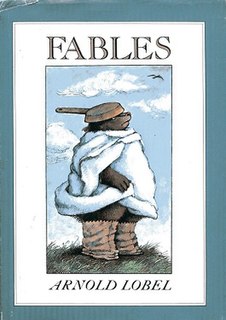 W
WFables is a children's picture book by American author Arnold Lobel. Released by Harper & Row in 1980, it was the recipient of the Caldecott Medal for illustration in 1981.
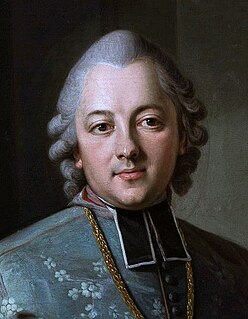 W
WFables and Parables, by Ignacy Krasicki (1735–1801), is a work in a long international tradition of fable-writing that reaches back to antiquity. Krasicki's fables and parables have been described as being, "[l]ike Jean de La Fontaine's [fables],... amongst the best ever written, while in colour they are distinctly original, because Polish." They are, according to Czesław Miłosz, "the most durable among Krasicki's poems."
 W
WJean de La Fontaine collected fables from a wide variety of sources, both Western and Eastern, and adapted them into French free verse. They were issued under the general title of Fables in several volumes from 1668 to 1694 and are considered classics of French literature. Humorous, nuanced and ironical, they were originally aimed at adults but then entered the educational system and were required learning for school children.
 W
WThe Foolish Old Man Removes the Mountains is a well-known fable from Chinese mythology about the virtues of perseverance and willpower. The tale first appeared in Book 5 of the Liezi, a Daoist text of the 4th century BC, and was retold in the Garden of Stories by the Confucian scholar Liu Xiang in the 1st century BC. It was also used by Mao Zedong in a famous speech in 1945.
 W
WThe Fox and the Cat is an ancient fable, with both Eastern and Western analogues involving different animals, that addresses the difference between resourceful expediency and a master stratagem. Included in collections of Aesop's fables since the start of printing in Europe, it is number 605 in the Perry Index. In the basic story a cat and a fox discuss how many tricks and dodges they have. The fox boasts that he has many; the cat confesses to having only one. When hunters arrive with their dogs, the cat quickly decides to climb a tree, but the fox thinks of many ways without acting and is caught by the hounds. Many morals have been drawn from the fable's presentations through history and, as Isaiah Berlin's use of it in his essay "The Hedgehog and the Fox" shows, it continues to be interpreted anew.
 W
WThe Fox, the Wolf and the Husbandman is a poem by the 15th-century Scottish poet Robert Henryson and part of his collection of moral fables known as the Morall Fabillis of Esope the Phrygian. It is written in Middle Scots. As with the other tales in the collection, appended to it is a moralitas which elaborates on the moral that the fable is supposed to contain. However, the appropriateness of the moralitas for the tale itself has been questioned.
 W
WRana rupta et bos is a Latin retelling from the Liber primus of the Fabulae (1:24) of the Roman poet Phaedrus ; the Latin text is itself based on The Frog and the Ox, one of Aesop's Fables.
 W
W"The Goat and Her Three Kids" or "The Goat with Three Kids" is an 1875 short story, fable and fairy tale by Romanian author Ion Creangă. Figuratively illustrating for the notions of motherly love and childish disobedience, it recounts how a family of goats is ravaged by the Big Bad Wolf, allowed inside the secured home by the oldest, most ill-behaved and least prudent of the kids. The only one of the children to survive is the youngest and most obedient, who then helps his mother plan her revenge on the predator, leading to a dénouement in which the wolf is tricked, burned alive and stoned to death.
 W
WGon, the Little Fox is a Japanese children's story about the life of a little fox called Gon. The story is considered the masterpiece of Niimi Nankichi, also sometimes known as the Hans Christian Andersen of Japan.
 W
W"The Hare and many friends" was the final fable in John Gay's first collection of 1727. It concerns the inconstancy of friendship as exemplified by a hare that lives on friendly terms with the farm animals. When the horns of the hunt are heard, she panics and eventually collapses exhausted, begging each of her acquaintances to help her escape. All give her different excuses, the last being a "trotting calf" who bids her "Adieu" as the hunters burst onto the scene. The poem won widespread popularity for some 150 years afterwards but, on a prose version appearing in a collection of Aesop's Fables, Gay's original authorship has gradually become forgotten.
 W
WHope for the Flowers is an allegorical novel by Trina Paulus. It was first published in 1972 and reflects the idealism of the counterculture of the period. Often categorized as a children's novel, it is a fable "partly about life, partly about revolution and lots about hope – for adults and others including caterpillars who can read". The two focal characters are caterpillars named Yellow and Stripe. They begin their search for meaning by attempting to climb to the top of a caterpillar pillar only to discover another destiny.
 W
WJonathan Livingston Seagull, written by American author Richard Bach and illustrated by Russell Munson, is a fable in novella form about a seagull who is trying to learn about life and flight, and a homily about self-perfection. Bach wrote it as a series of short stories that were published in Flying magazine in the late 1960s. It was first published in book form in 1970, and by the end of 1972 over a million copies were in print. Reader's Digest published a condensed version, and the book reached the top of the New York Times Best Seller list, where it remained for 37 weeks. In 1972 and 1973, the book topped the Publishers Weekly list of bestselling novels in the United States.
 W
WThe Little Red Hen is an American fable first collected by Mary Mapes Dodge in St. Nicholas Magazine in 1874. The story is meant to teach children the importance of hard work and personal initiative.
 W
WThe Man of Forty Crowns is a fable written by Voltaire.
 W
WA Book of Wisdom and Lies is a collection of fables and tales written by Sulkhan-Saba Orbeliani between 1686 and 1695.
 W
WThe Milkmaid and Her Pail is a folktale of Aarne-Thompson-Uther type 1430 about interrupted daydreams of wealth and fame. Ancient tales of this type exist in the East but Western variants are not found before the Middle Ages. It was only in the 18th century that the story about the daydreaming milkmaid began to be attributed to Aesop, although it was included in none of the main collections, and it does not appear in the Perry Index.
 W
WThe miller, his son and the donkey is a widely dispersed fable, number 721 in the Perry Index and number 1215 in the Aarne–Thompson classification systems of folklore narratives. Though it may have ancient analogues, the earliest extant version is in the work of the 13th-century Arab writer Ibn Said. There are many eastern versions of the tale and in Europe it was included in a number of Mediaeval collections. Since then it has been frequently included in collections of Aesop's fables as well as the influential Fables of Jean de la Fontaine.
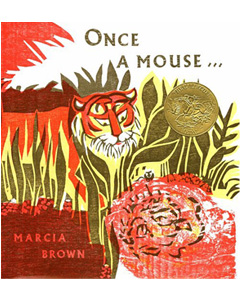 W
WOnce a Mouse is a 1961 children's picture book by Marcia Brown. Released by Scribner Press, it was the recipient of the Caldecott Medal for illustration in 1962, the second time Brown received that honor.
 W
WThe Panchatantra is an ancient Indian collection of interrelated animal fables in Sanskrit verse and prose, arranged within a frame story. The surviving work is dated to roughly 200 BCE – 300 CE, based on older oral tradition. The text's author has been attributed to Vishnu Sharma in some recensions and Vasubhaga in others, both of which may be pen names. It is classical literature in a Hindu text, and based on older oral traditions with "animal fables that are as old as we are able to imagine".
 W
WThe People Could Fly: American Black Folktales is a 1985 collection of twenty-four folktales retold by Virginia Hamilton and illustrated by Leo and Diane Dillon. They encompass animal tales, fairy tales, supernatural tales, and tales of the enslaved Africans.
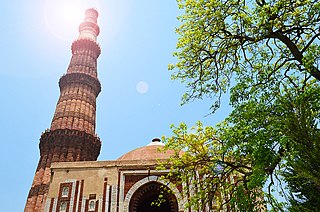 W
WThe Prince's Dream is a fable written by Jean Ingelow as part of The Wonderbox Tales collection. The story is a tale of a prince living in seclusion within a far-off tower filled with many luxuries, in Southern Asia (India). The story focuses on his encounter with an old man, who comes to the prince in a dream and offers a view of what the ‘outside world’ is truly about. This encounter shapes the prince's view of the outside world, as well as his developing views on morality and the importance and reason of life.
 W
WReynard the Fox is a literary cycle of medieval allegorical Dutch, English, French and German fables. The first extant versions of the cycle date from the second half of the 12th century. The genre is very popular throughout the Late Middle Ages, and in chapbook form throughout the Early Modern period.
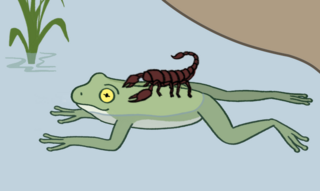 W
WThe Scorpion and the Frog is an animal fable which teaches that some people cannot resist hurting others even when it is not in their own interests. This fable seems to have emerged in Russia in the early 20th century.
 W
WShita-kiri Suzume , translated literally into "Tongue-Cut Sparrow", is a traditional Japanese fable telling of a kind old man, his avaricious wife and an injured sparrow. The story explores the effects of greed, friendship and jealousy on the characters.
 W
WThe Fables by Christopher Smart were written between 1750 and 1767 and partly published in the periodicals The Midwife; or The Old Woman's Magazine, The Gentleman's Magazine, The Literary Magazine, etc. The order in this collection of the fables was made by Smart himself and Christopher Hunter, Smart's biographer and nephew, after him, as it was printed posthumously in 1791 edition.
 W
WSquids Will Be Squids is a children's picture book written by Jon Scieszka and illustrated by Lane Smith. It was published in 1998 by Viking Press.
 W
WSquirrel Seeks Chipmunk: A Modest Bestiary is a collection of animal-themed humorous short stories by memoirist and humorist David Sedaris. The collection was published in September 2010.
 W
WStone Soup is a European folk story in which hungry strangers convince the people of a town to each share a small amount of their food in order to make a meal that everyone enjoys, and exists as a moral regarding the value of sharing. In varying traditions, the stone has been replaced with other common inedible objects, and therefore the fable is also known as axe soup, button soup, nail soup, and wood soup.
 W
WThe Dead King and his Three Sons and The King's Sons Shooting at Their Father's Corpse are titles for a story sometimes depicted in medieval and Renaissance art, initially mostly in miniatures in illuminated manuscripts, and later in engravings, paintings and other media.
 W
WThe fable of the thistle and the cedar tree is a fable attributed to Jehoash King of Israel, and recounted in the Hebrew Bible in 2 Kings 14:9–10.Amaziah sent messengers to Jehoash the son of Jehoahaz, the son of Jehu, king of Israel, saying, “Come, let us face one another in battle”. And Jehoash king of Israel sent to Amaziah king of Judah, saying, “The thistle that was in Lebanon sent to the cedar that was in Lebanon, saying, ‘Give your daughter to my son as wife’; and a wild beast that was in Lebanon passed by and trampled the thistle. You have indeed defeated Edom, and your heart has lifted you up. Glory in that, and stay at home; for why should you meddle with trouble so that you fall, you and Judah with you?” But Amaziah would not heed. Therefore Jehoash king of Israel went out; so he and Amaziah king of Judah faced one another at Beth Shemesh, which belongs to Judah. And Judah was defeated by Israel, and every man fled to his tent.
 W
W"The Three Little Pigs" is a fable about three pigs who build three houses of different materials. A Big Bad Wolf blows down the first two pigs' houses, made of straw and sticks respectively, but is unable to destroy the third pig's house, made of bricks. Printed versions date back to the 1840s, but the story is thought to be much older. The earliest version takes place in Dartmoor with three pixies and a fox before its best known version appears in English Fairy Tales by Joseph Jacobs in 1890, with Jacobs crediting James Halliwell-Phillipps as the source.
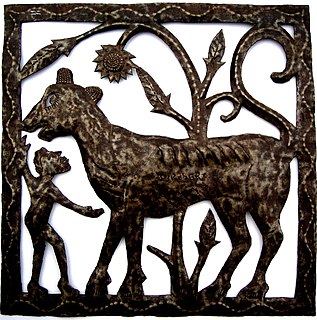 W
WThe Tiger, the Brahmin and the Jackal is a popular Indian folklore with a long history and many variants. The earliest record of the folklore was included in the Panchatantra, which dates the story between 200 BCE and 300 CE.
 W
WThe Tortoise and the Birds is a fable of probable folk origin, early versions of which are found in both India and Greece. There are also African variants. The moral lessons to be learned from these differ and depend on the context in which they are told.
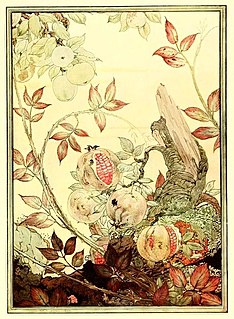 W
WThe Trees and the Bramble is a composite title which covers a number of fables of similar tendency, ultimately deriving from a Western Asian literary tradition of debate poems between two contenders. Other related plant fables include The Oak and the Reed and The Fir and the Bramble.
 W
WThe Turtle and the Monkey also known as The Monkey and the Turtle is a Philippine fable. It involves the tortoise outwitting a monkey over a banana tree. The story was popularized by Jose Rizal, who made a publication of the story in English in the July 1889 issue of Trübner's Oriental Record in England, which is considered to be the formal beginning of Philippine children's literature.
 W
WThe White Bull is a fable and a work of "contes philosophiques", a philosophical novel, written by the Age of Enlightenment-era philosopher Voltaire. The story is based on the Greek tale of Europa and the bull, where the white bull is in fact the Greek god Zeus.
 W
W"The Wolf and the Seven Young Goats" is a fairy tale collected by the Brothers Grimm and published in Grimm's Fairy Tales. It is of Aarne-Thompson type 123.
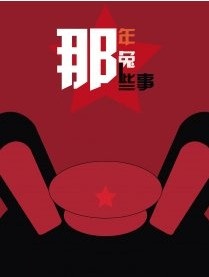 W
WYear Hare Affair is a Chinese webcomic and media franchise by Lin Chao (林超), initially under the pen name "逆光飞行". The comic uses anthropomorphic animals as an allegory for nations and sovereign states to represent 20th century political, military and diplomatic events.
 W
WYsengrimus is a Latin fabliau and mock epic, an anthropomorphic series of fables written in 1148 or 1149, possibly by the poet Nivardus. Its chief character is Isengrin the Wolf; the plot describes how the trickster figure Reynard the Fox overcomes Isengrin's various schemes.